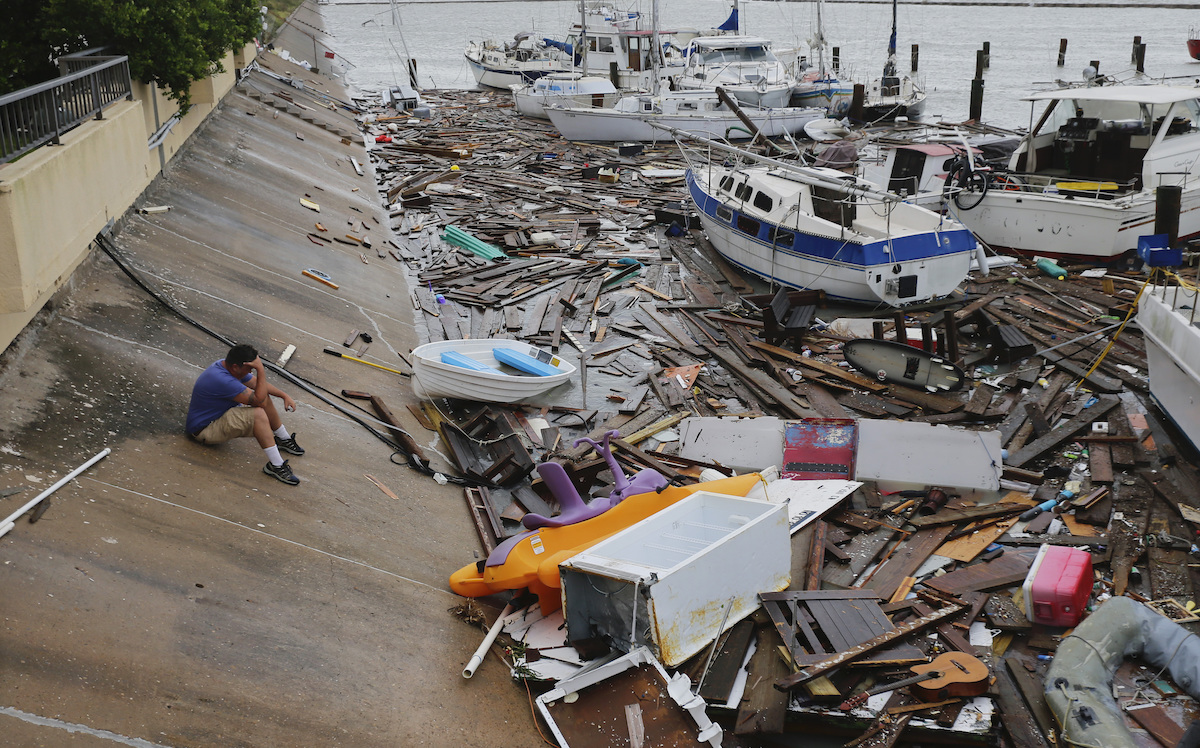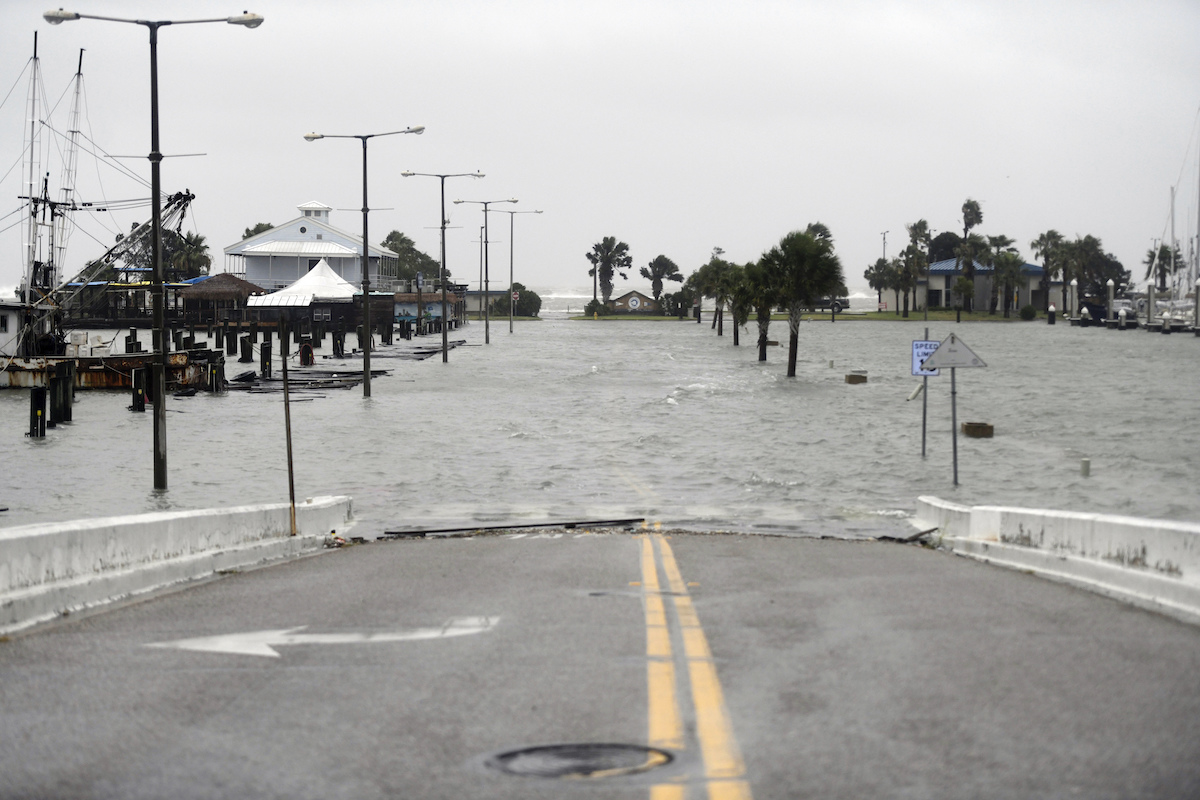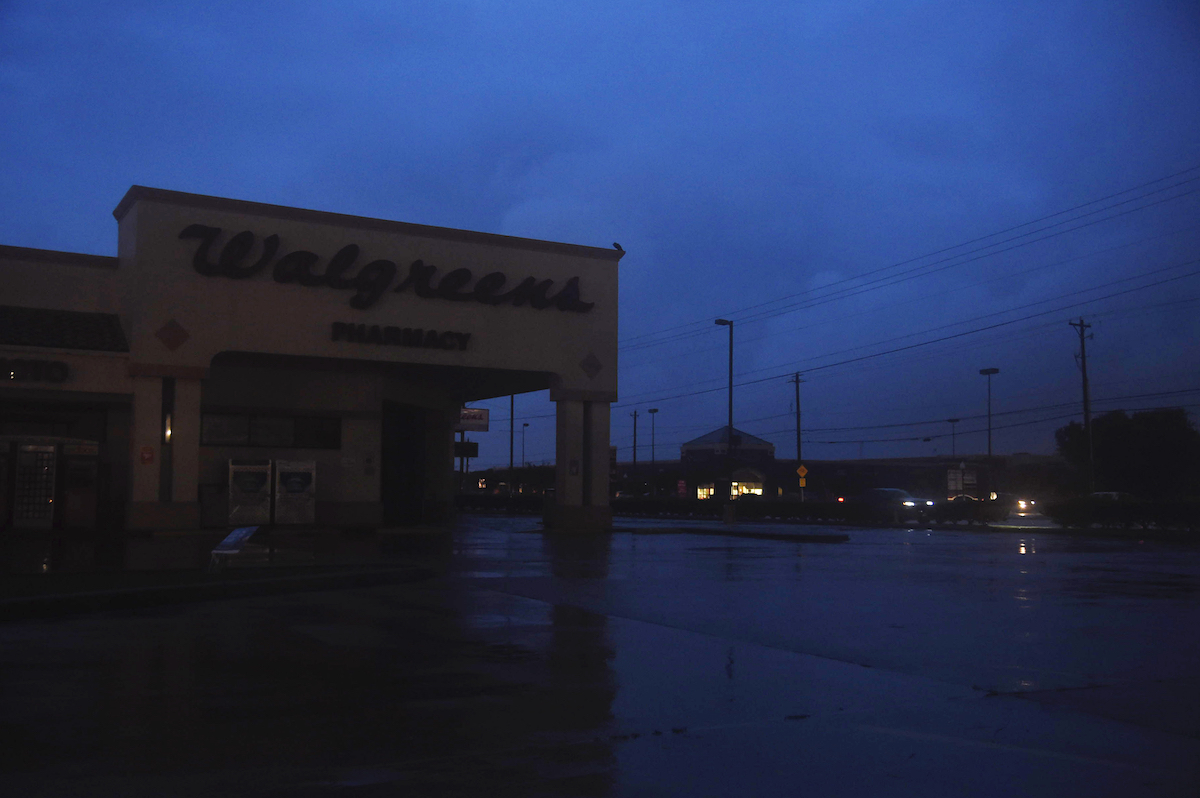

Allen Heath surveys the damage to a private marina after it was hit by Hurricane Hanna, Sunday, July 26, 2020, in Corpus Christi, Texas. Heath’s boat and about 30 others were lost or damaged. (AP Photo/Eric Gay)
By JOHN L. MONE and NOMAAN MERCHANT, Associated Press
CORPUS CHRISTI, Texas (AP) — A downgraded Hanna continued charging across the borderland of South Texas and northeastern Mexico, where flooding remained the biggest threat Monday in a region that was already reeling from a surge in cases of the coronavirus.
Hanna, downgraded to a tropical depression, passed over the U.S.-Mexico border Sunday with winds near 50 mph (85 kph), the National Hurricane Center said. It unloaded more than 12 inches (30 centimeters) of rain in some areas, and more was expected.
Border communities whose health care systems were already strained by COVID-19 cases —with some patients being airlifted to larger cities— found themselves grappling with Hanna. There were no immediate reports of any deaths on either side of the border.
Dr. Ivan Meléndez, the health authority in Hidalgo County, Texas, was treating a patient overnight at a hospital when he and a nurse noticed water streaming down a wall and pooling on the floor. The water was flowing through a vent in the room, which had been retrofitted with a fan to create negative pressure and prevent the virus spreading through the hospital.
After driving home in the storm in the middle of the night, Meléndez was trapped Sunday morning in his home by downed trees and had no electricity. He used the phone to discuss whether to put a 58-year-old woman on a ventilator, a decision he felt uncomfortable making without seeing the patient in person.
“You look at the people’s eyes,” he said. “You’ll know if they’re in despair.”
Another doctor decided to place the woman on the ventilator, he said later.
Henry Van De Putte, CEO of the Red Cross’ Texas Gulf Coast chapter, said the organization would open more shelters with reduced capacity to ensure social distancing. Volunteers and people seeking refuge will undergo temperature checks, and a medical professional will be assigned to each location, he said.
A community building known as the “Dome” in Mercedes, Texas, was set aside for evacuees who had tested positive for COVID-19 or were exposed to the virus. Across the region, shelters were also opened in hotels, schools and gyms.
Van De Putte emphasized that people should not delay seeking help because of the virus.
“Yes, coronavirus provides risk, but so does floodwater, so does not having electricity, so does not having required medications,” he said. “We’re doing everything we can do possible to make it a safe environment.”
In the Mexican border city of Reynosa, a maternity hospital was damaged by heavy rain, and water had to be pumped out, authorities said. Some patients had to be moved to upper floors, and a few were evacuated to other hospitals, said Pedro Granados, director of civil protection for Tamaulipas state.
Coastal states scrambled this spring to adjust emergency hurricane plans to account for the virus, and Hanna was the first big test. Gov. Greg Abbott said Saturday that some people in need of shelter would be given hotel rooms to keep them apart from others.


Peoples Street begins to flood during Hurricane Hanna, Saturday, July 25, 2020, in Corpus Christi, Texas. (Annie Rice/Corpus Christi Caller-Times via AP)
Abbott announced Sunday that the Federal Emergency Management Agency approved an emergency declaration that will provide federal aid.
Hanna blew ashore as a Category 1 storm late Saturday afternoon with winds of 90 mph (145 kph) not far from Port Mansfield, which is about 130 miles (210 kilometers) south of Corpus Christi.
Myrle Tucker, 83, tried to ride out the storm in a powerboat docked in a Corpus Christi marina. But winds and rain blew out the vessel’s windows. Eventually rescuers in a dinghy were able to reach him and bring him to shore. Many other boats were flooded and lashed by the storm.
Tucker said he told his rescuers he wasn’t sure he would be able to climb out of his boat.
“They picked me up,” he said. “They carried me like a box of napkins.”
More than 150,000 customers lost power Sunday throughout South Texas, including Corpus Christi, Harlingen and Brownsville, utility officials said.


A darkened Walgreens is seen off of Saratoga and Staples during Hurricane Hanna, Saturday, July 25, 2020, in Corpus Christi, Texas. (Annie Rice/Corpus Christi Caller-Times via AP)
Corpus Christi is in Nueces County, where 60 babies tested positive for COVID-19 from July 1 to July 16. Farther south in Cameron County, more than 300 new cases have been reported almost daily for the past two weeks. The past week has also been the county’s deadliest of the pandemic.
Hanna came nearly three years after Hurricane Harvey blew ashore northeast of Corpus Christi. Hanna was not expected to be as destructive as Harvey, which killed 68 people and caused an estimated $125 billion in damage in Texas.
In the Mexican city of Matamoros, across from Brownsville, the rains shook tents in a refugee camp housing an estimated 1,300 asylum seekers, including newborns and elderly people, who have been waiting for months for court dates under a U.S. immigration policy informally known as “Remain in Mexico.”
In the Pacific Ocean, meanwhile, Hurricane Douglas closed in on Hawaii over the weekend.
***
Merchant reported from Houston. Associated Press writer María Verza in Mexico City and Desiree Seals in Atlanta contributed to this report.


